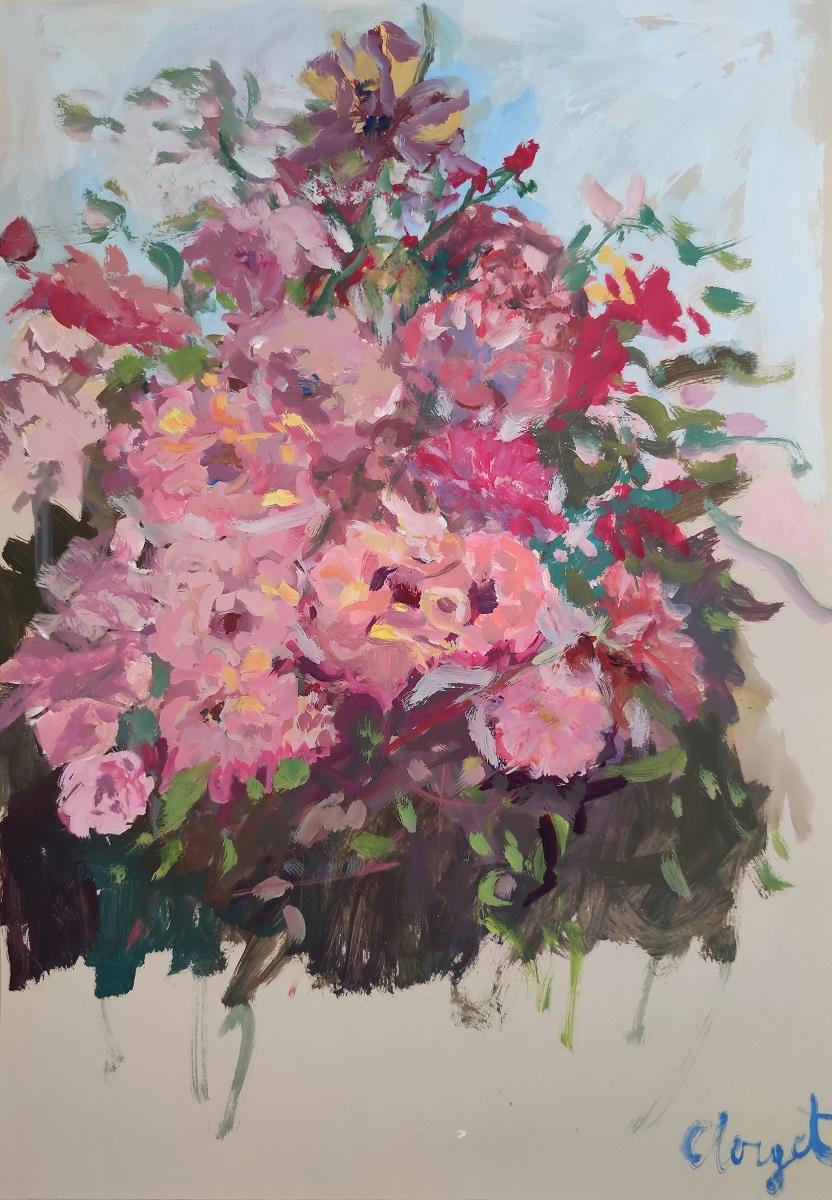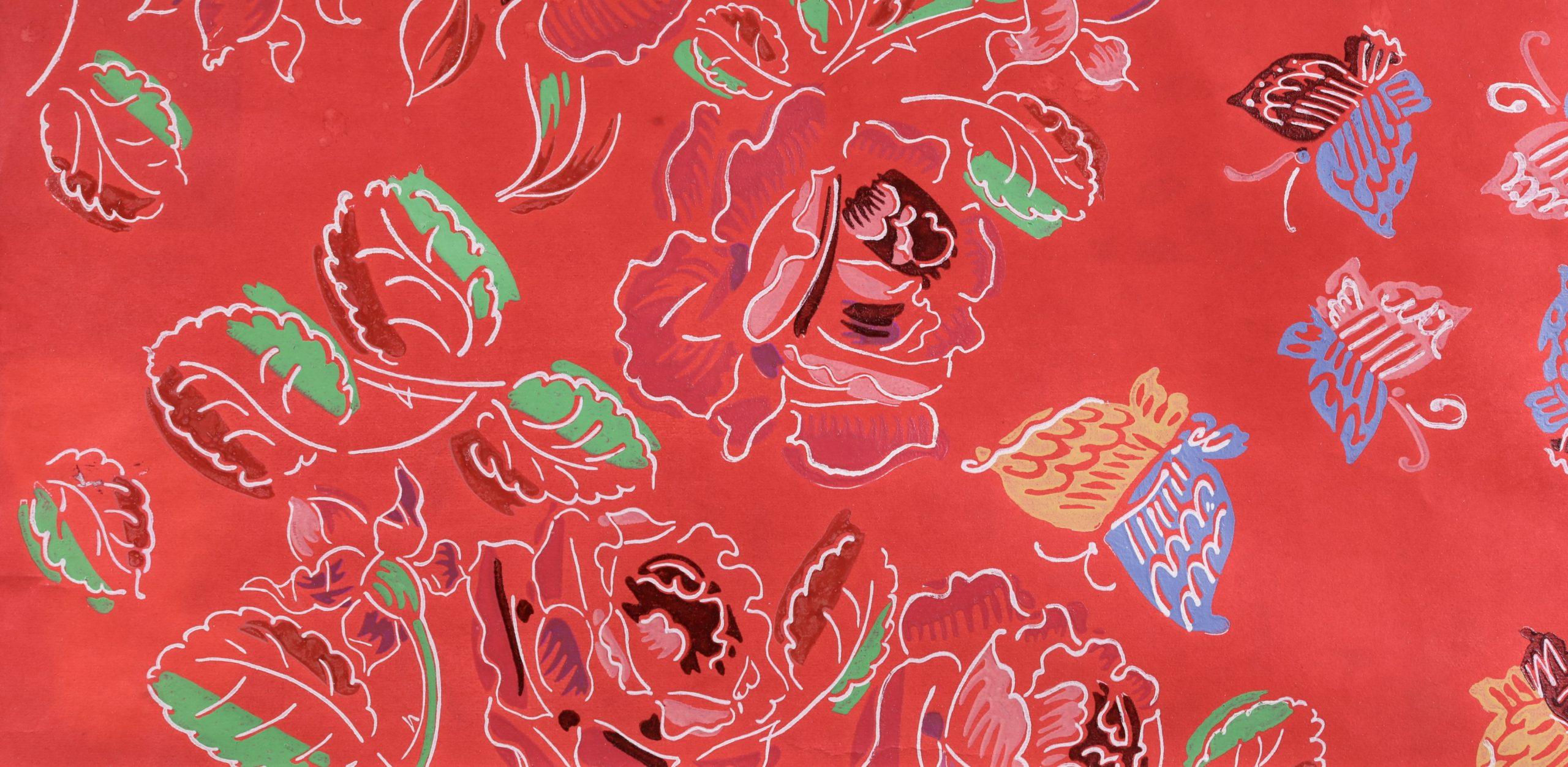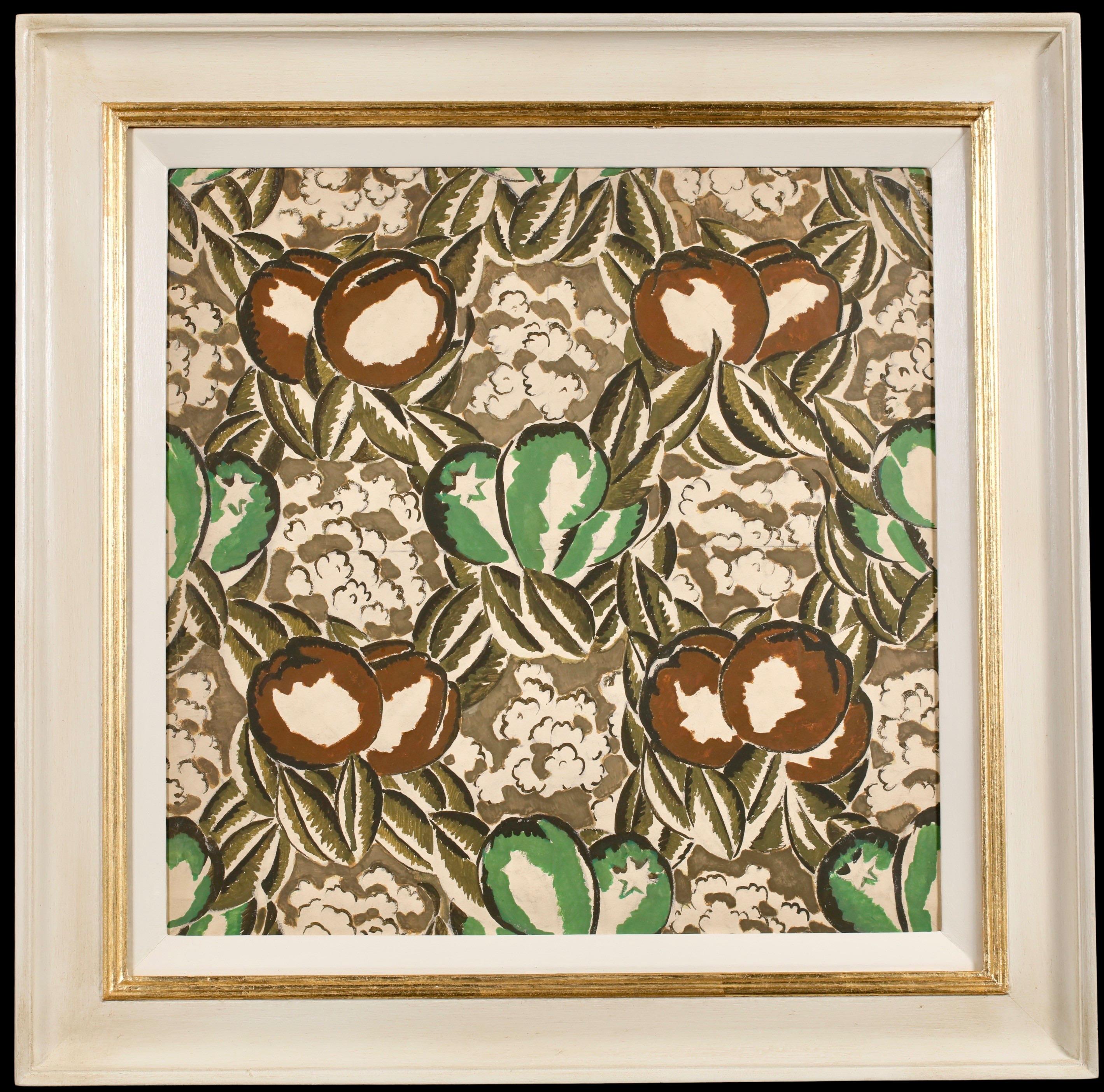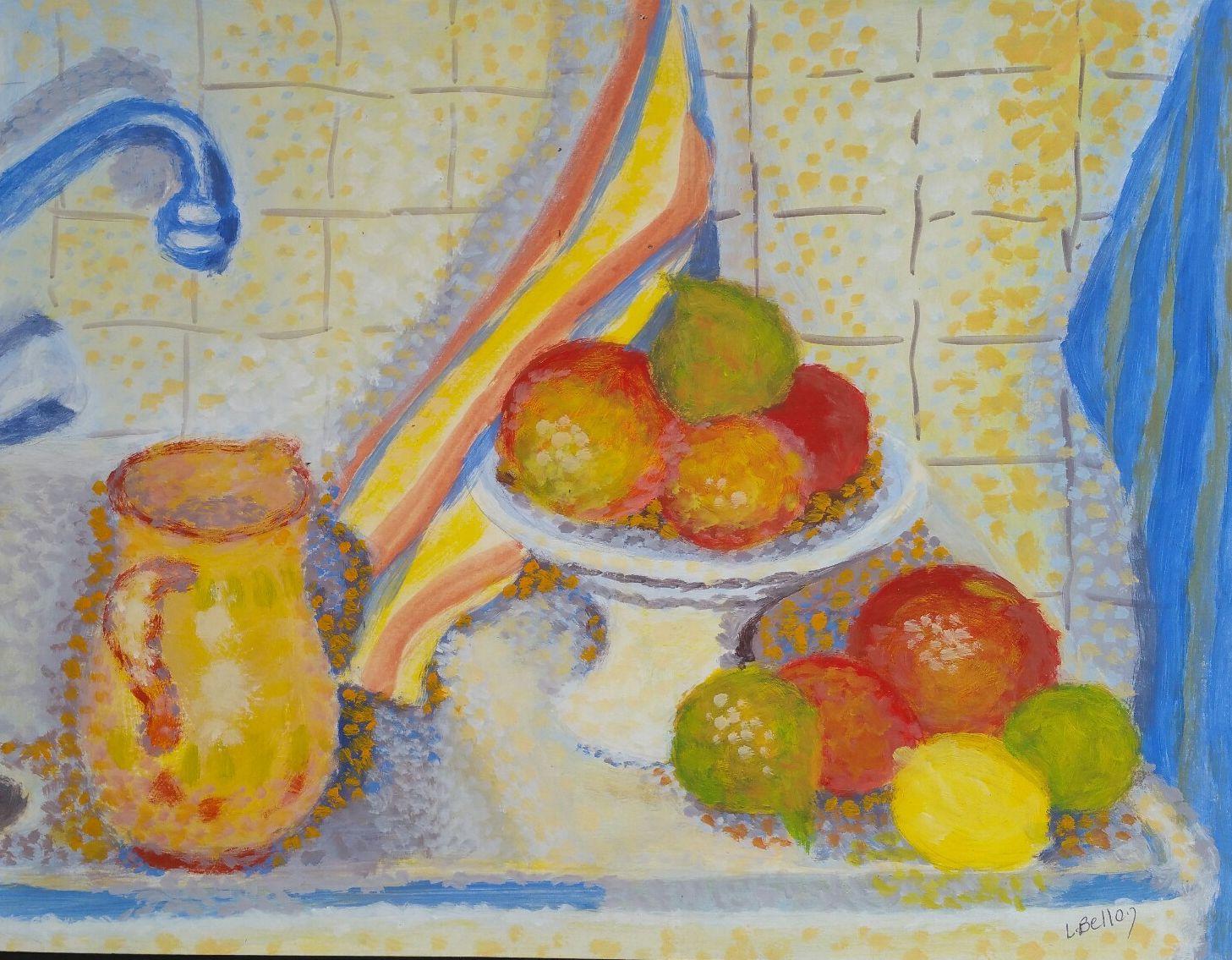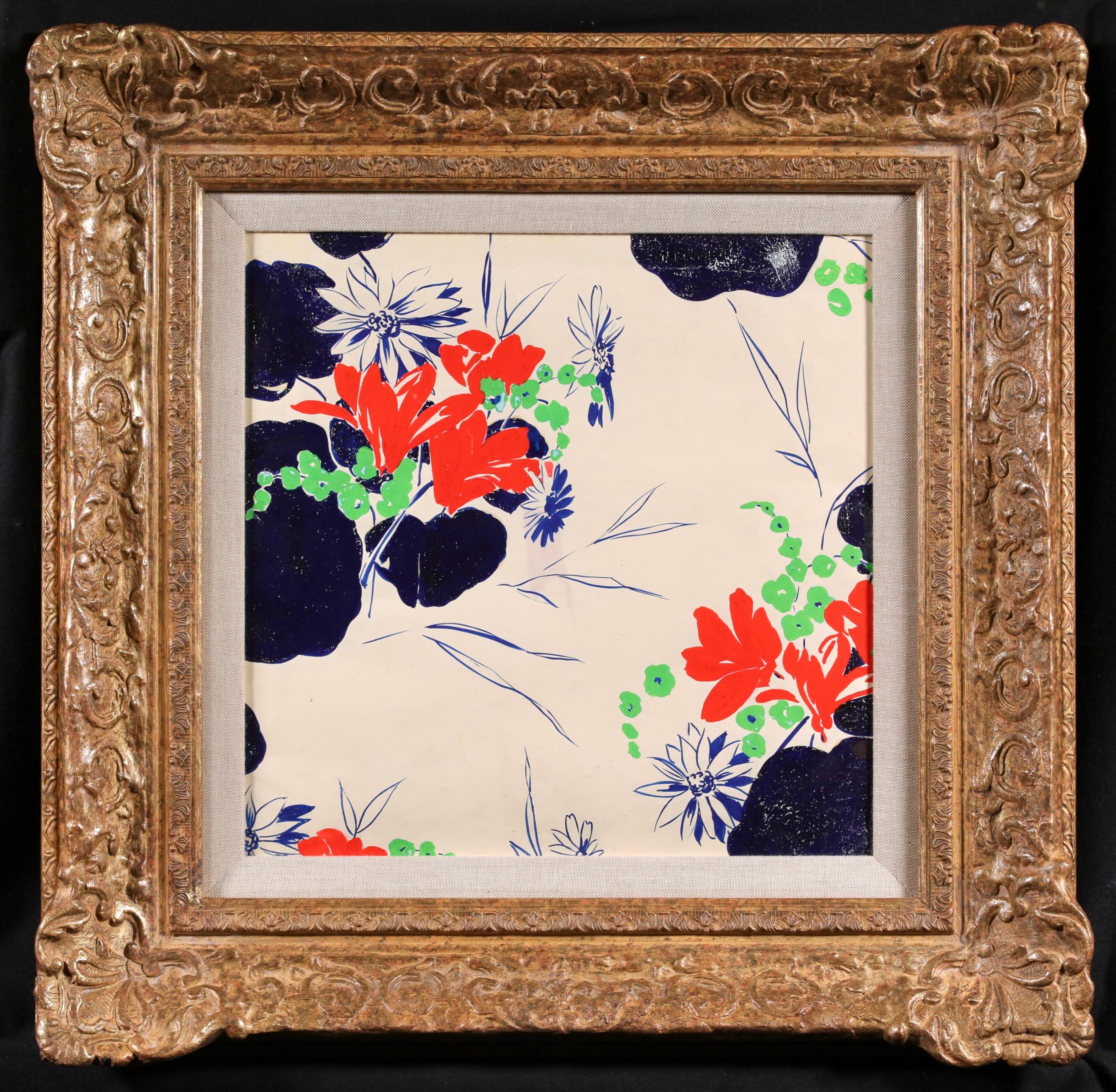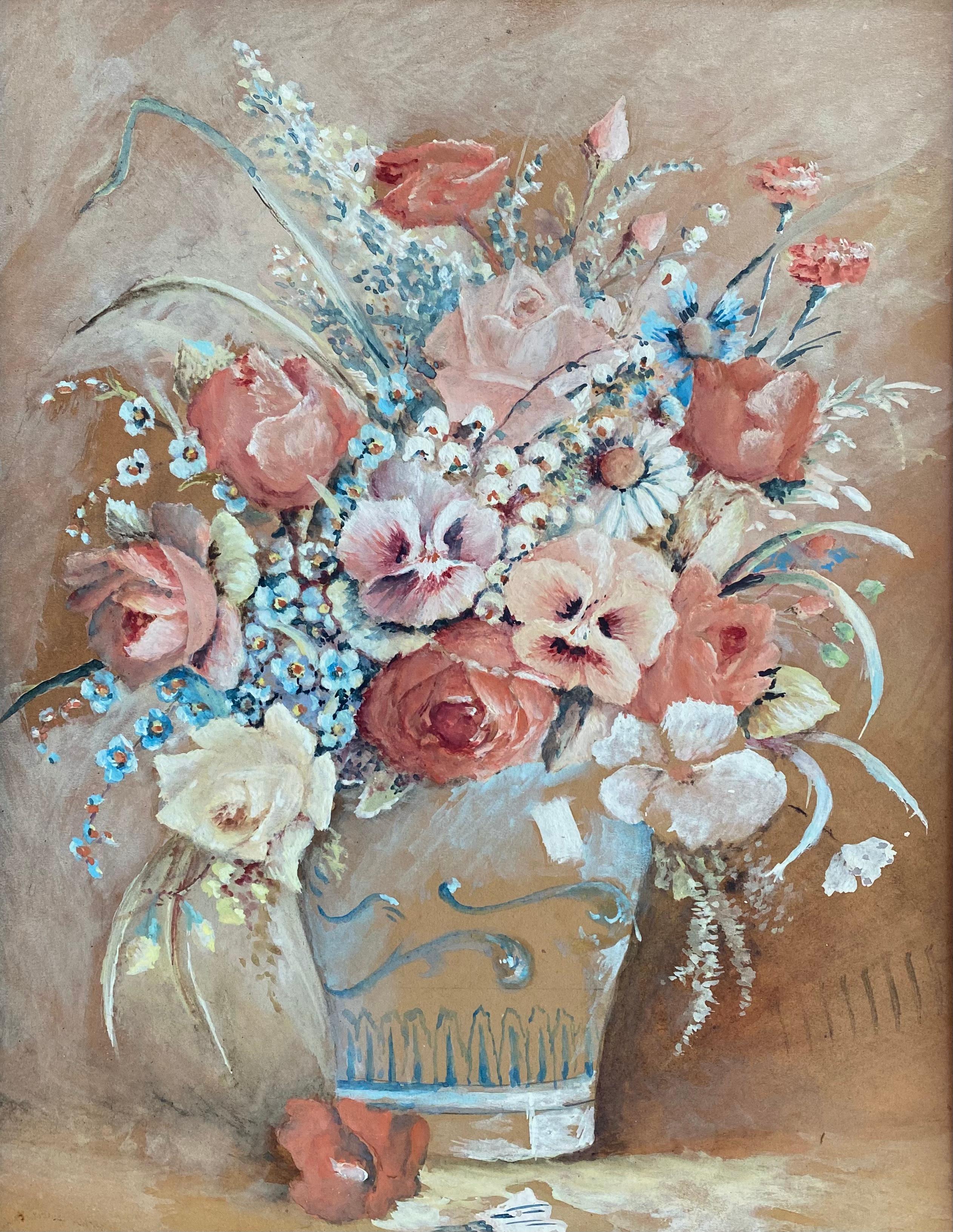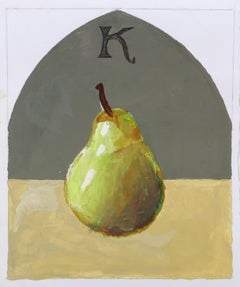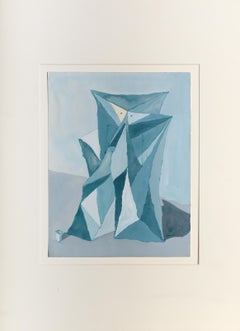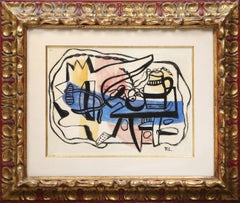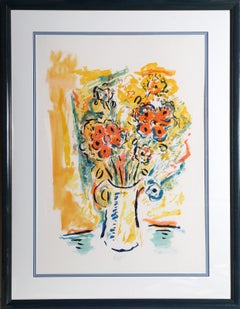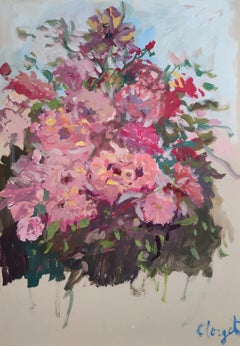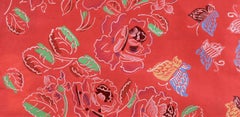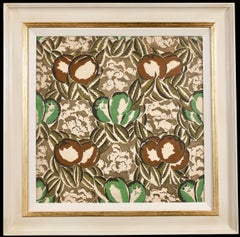Items Similar to Flower Pot, Impressionist Gouache Painting by Eugene Baboulene
Want more images or videos?
Request additional images or videos from the seller
1 of 5
Eugene BabouleneFlower Pot, Impressionist Gouache Painting by Eugene Baboulene
About the Item
Artist: Eugene Baboulene, French (1905 - 1994)
Title: Flower Pot
Year: circa 1960
Medium: Gouache on Paper, signed and dedicated l.r.
Size: 20 in. x 13 in. (50.8 cm x 33.02 cm)
Frame Size: 31 x 28 inches
- Creator:Eugene Baboulene (1905 - 1994, French)
- Dimensions:Height: 31 in (78.74 cm)Width: 28 in (71.12 cm)
- Medium:
- Movement & Style:
- Period:
- Condition:
- Gallery Location:Long Island City, NY
- Reference Number:Seller: RO480631stDibs: LU466202942
About the Seller
4.9
Platinum Seller
Premium sellers with a 4.7+ rating and 24-hour response times
Established in 1979
1stDibs seller since 2014
2,999 sales on 1stDibs
Typical response time: 1 hour
- ShippingRetrieving quote...Shipping from: Long Island City, NY
- Return Policy
Authenticity Guarantee
In the unlikely event there’s an issue with an item’s authenticity, contact us within 1 year for a full refund. DetailsMoney-Back Guarantee
If your item is not as described, is damaged in transit, or does not arrive, contact us within 7 days for a full refund. Details24-Hour Cancellation
You have a 24-hour grace period in which to reconsider your purchase, with no questions asked.Vetted Professional Sellers
Our world-class sellers must adhere to strict standards for service and quality, maintaining the integrity of our listings.Price-Match Guarantee
If you find that a seller listed the same item for a lower price elsewhere, we’ll match it.Trusted Global Delivery
Our best-in-class carrier network provides specialized shipping options worldwide, including custom delivery.More From This Seller
View AllPear Still Life, Modern Gouache Painting on paper by Robert Kulicke
By Robert Kulicke
Located in Long Island City, NY
Robert Kulicke, American (1924 - 2007) - Pear Still Life, Medium: Gouache on paper, monogramed on top in pencil, Image Size: 8 x 6.5 inches, Size: 8.5 x 7 in. (21.59 x 17.78 cm)
Category
Mid-20th Century Modern Still-life Drawings and Watercolors
Materials
Gouache
Abstract Structure with Cup, Modern Cubist Painting by Benjamin Benno
By Benjamin G. Benno
Located in Long Island City, NY
Benjamin Benno was a British-born American artist, best known for his Cubist and abstract works. This artwork is signed and dated.
Abstract Structure with Cup
Benjamin Benno, Americ...
Category
1930s Cubist Still-life Drawings and Watercolors
Materials
Paper, Gouache
Composition, Original Modern Still Life Gouache Painting by Fernand Leger
By Fernand Léger
Located in Long Island City, NY
Fernand Leger's depiction of a still life with a pitcher and bowl of fruit starts in simplistic and tangible reality on the right side of the composition before quickly devolving int...
Category
1950s Modern Still-life Drawings and Watercolors
Materials
Paper, Gouache
Yellow Bouqet, Impressionist Watercolor by Wayne Ensrud
By Wayne Ensrud
Located in Long Island City, NY
Wayne Ensrud, American (1934 - ) - Yellow Bouqet, Year: circa 1980, Medium: Watercolor on Paper, signed, Size: 32 x 22.5 in. (81.28 x 57.15 cm), Frame Size: 41.5 x 32 inches
Category
1980s Impressionist Still-life Drawings and Watercolors
Materials
Watercolor
Abstract Composition #1, Modern Cubist Drawing by Benjamin Benno
By Benjamin G. Benno
Located in Long Island City, NY
Benjamin Benno was an British-born American artist, best known for his Cubist and abstract works. This artwork is signed and dated.
Abstract Composition #1
Benjamin Benno, American ...
Category
1940s Cubist Still-life Drawings and Watercolors
Materials
Paper, Watercolor, Permanent Marker
Orange, Pear and Lemon, Impressionist Watercolor and Graphite on paper
By John Urbain
Located in Long Island City, NY
John Urbain, Belgian/American (1920 - 2009) - Orange, Pear and Lemon, Year: circa 1975, Medium: Watercolor and Graphite on paper, signed in pencil, Size: 11.5 x 16.5 in. (29.21 x 4...
Category
1970s Impressionist Still-life Drawings and Watercolors
Materials
Watercolor, Graphite
You May Also Like
Floral gouache impressionist 'Always Roses' by Linda Clerget
Located in THOMERY, FR
The work of Linda Clerget is realized in an impressionist style à la gouache alla prima. The colors are broken and worked in the fresh.
Linda Clerget is a French artist known intern...
Category
21st Century and Contemporary Fauvist Still-life Drawings and Watercolors
Materials
Archival Paper, Gouache
Fleurs et Papillons - Fauvist Flowers Watercolor & Gouache by Raoul Dufy
By Raoul Dufy
Located in Marlow, Buckinghamshire
Botanical watercolour and gouache on paper circa 1920 by French fauvist painter Raoul Dufy. The work depicts flowers in red and butterflies in blues, yellows, black and white. This work was executed by Dufy as a fabric design.
Dimensions:
Framed: 17"x27"
Unframed: 10"x20"
Provenance:
Private collection of works by Raoul Dufy for Bianchini Ferier
Bianchini Ferrier Collection - Christie's London - July 2001
SF Fall Show
Raoul Dufy was one of a family of nine children, including five sisters and a younger brother, Jean Dufy, also destined to become a painter. Their father was an accountant in the employ of a major company in Le Havre. The Dufy family was musically gifted: his father was an organist, as was his brother Léon, and his youngest brother Gaston was an accomplished flautist who later worked as a music critic in Paris. Raoul Dufy's studies were interrupted at the age of 14, when he had to contribute to the family income. He took a job with an importer of Brazilian coffee, but still found time from 1892 to attend evening courses in drawing and composition at the local college of fine arts under Charles Marie Lhullier, former teacher of Othon Friesz and Georges Braque. He spent his free time in museums, admiring the paintings of Eugène Boudin in Le Havre and The Justice of Trajan in Rouen. A municipal scholarship enabled him to leave for Paris in 1900, where he lodged initially with Othon Friesz. He was accepted by the École des Beaux-Arts, where he studied under Léon Bonnat, whose innate conservatism prompted Dufy to remark later that it was 'good to be at the Beaux-Arts providing one knew one could leave'.
And leave he did, four years later, embarking with friends and fellow students on the rounds of the major Paris galleries - Ambroise Vollard, Durand-Ruel, Eugène Blot and Berheim-Jeune. For Dufy and his contemporaries, Impressionism represented a rejection of sterile academism in favour of the open-air canvases of Manet, the light and bright colours of the Impressionists, and, beyond them, the daringly innovative work of Gauguin and Van Gogh, Seurat, Cézanne, Toulouse-Lautrec and others. Dufy was an out-and-out individualist, however, and was not tempted to imitate any of these artists. He produced, between 1935 and 1937, Fée Electricité (Spirit of Electricity), the emblem for the French utilities company Electricité de France (EDF).
Dufy visited the USA for the first time in 1937, as a member of the Carnegie Prize jury. In 1940, the outbreak of war (and his increasingly rheumatic condition) persuaded him to settle in Nice. When he eventually returned to Paris 10 years later, his rheumatism had become so debilitating that he immediately left for Boston to follow a course of pioneering anti-cortisone treatment. He continued working, however, spending time first in Harvard and then in New York City before moving to the drier climate of Tucson, Arizona. The cortisone treatment was by and large unsuccessful, although he did recover the use of his fingers. He returned to Paris in 1951 and decided to settle in Forcalquier, where the climate was more clement. Within a short time, however, he was wheelchair-bound. He died in Forcalquier in March 1953 and was buried in Cimiez.
Between 1895 and 1898, Raoul Dufy painted watercolours of landscapes near his native Le Havre and around Honfleur and Falaise. By the turn of the century, however, he was already painting certain subjects that were to become hallmarks of his work - flag-decked Parisian cityscapes, Normandy beaches teeming with visitors, regattas and the like, including one of his better-known early works, Landing Stage at Ste-Adresse. By 1905-1906 Friesz, Braque, Matisse, Derain, Vlaminck, Van Dongen and Rouault were described collectively as Fauves (the wild beasts). What they had in common was a desire to innovate, but they felt constrained nonetheless to meet formally to set out the guiding principles of what promised to be a new 'movement'. Dufy quickly established that those principles were acceptable; moreover, he was most impressed by one particular painting by Henri Matisse ( Luxury, Calm and Voluptuousness) which, to Dufy, embodied both novelty and a sense of artistic freedom. Dufy promptly aligned himself with the Fauves. Together with Albert Marquet in particular, he spent his time travelling the Normandy coast and painting views similar...
Category
1920s Fauvist Still-life Drawings and Watercolors
Materials
Paper, Watercolor, Gouache
Projet de Tissus - Fauvist Still Life Study Gouache by Raoul Dufy
By Raoul Dufy
Located in Marlow, Buckinghamshire
Botanical gouache on paper circa 1920 by French fauvist painter Raoul Dufy. The work depicts a study of apples and pears. This work was executed by Dufy as a fabric design.
Dimensio...
Category
1920s Fauvist Still-life Drawings and Watercolors
Materials
Paper, Gouache
French Neo-Impressionist Still Life Pointillist Mid 20th Century Painting
By Louis Bellon
Located in Cirencester, Gloucestershire
Neo Impressionist Still Life
by Louis Bellon (French 1908-1998)
signed lower right
gouache painting on paper, unframed
measurements: 10 x 12.75 inche...
Category
Mid-20th Century Pointillist Still-life Paintings
Materials
Gouache
Projet de Tissus - Fauvist Flowers Watercolor & Gouache by Raoul Dufy
By Raoul Dufy
Located in Marlow, Buckinghamshire
Botanical watercolour and gouache on paper circa 1920 by French fauvist painter Raoul Dufy. The work depicts flowers in red, blue and green. This work was executed by Dufy as a fabric design.
Dimensions:
Framed: 19.5"x19.5"
Unframed: 12"x12"
Provenance:
Private collection of works by Raoul Dufy for Bianchini Ferier
Bianchini Ferrier Collection - Christie's London - July 2001
SF Fall Show
Raoul Dufy was one of a family of nine children, including five sisters and a younger brother, Jean Dufy, also destined to become a painter. Their father was an accountant in the employ of a major company in Le Havre. The Dufy family was musically gifted: his father was an organist, as was his brother Léon, and his youngest brother Gaston was an accomplished flautist who later worked as a music critic in Paris. Raoul Dufy's studies were interrupted at the age of 14, when he had to contribute to the family income. He took a job with an importer of Brazilian coffee, but still found time from 1892 to attend evening courses in drawing and composition at the local college of fine arts under Charles Marie Lhullier, former teacher of Othon Friesz and Georges Braque. He spent his free time in museums, admiring the paintings of Eugène Boudin in Le Havre and The Justice of Trajan in Rouen. A municipal scholarship enabled him to leave for Paris in 1900, where he lodged initially with Othon Friesz. He was accepted by the École des Beaux-Arts, where he studied under Léon Bonnat, whose innate conservatism prompted Dufy to remark later that it was 'good to be at the Beaux-Arts providing one knew one could leave'.
And leave he did, four years later, embarking with friends and fellow students on the rounds of the major Paris galleries - Ambroise Vollard, Durand-Ruel, Eugène Blot and Berheim-Jeune. For Dufy and his contemporaries, Impressionism represented a rejection of sterile academism in favour of the open-air canvases of Manet, the light and bright colours of the Impressionists, and, beyond them, the daringly innovative work of Gauguin and Van Gogh, Seurat, Cézanne, Toulouse-Lautrec and others. Dufy was an out-and-out individualist, however, and was not tempted to imitate any of these artists. He produced, between 1935 and 1937, Fée Electricité (Spirit of Electricity), the emblem for the French utilities company Electricité de France (EDF).
Dufy visited the USA for the first time in 1937, as a member of the Carnegie Prize jury. In 1940, the outbreak of war (and his increasingly rheumatic condition) persuaded him to settle in Nice. When he eventually returned to Paris 10 years later, his rheumatism had become so debilitating that he immediately left for Boston to follow a course of pioneering anti-cortisone treatment. He continued working, however, spending time first in Harvard and then in New York City before moving to the drier climate of Tucson, Arizona. The cortisone treatment was by and large unsuccessful, although he did recover the use of his fingers. He returned to Paris in 1951 and decided to settle in Forcalquier, where the climate was more clement. Within a short time, however, he was wheelchair-bound. He died in Forcalquier in March 1953 and was buried in Cimiez.
Between 1895 and 1898, Raoul Dufy painted watercolours of landscapes near his native Le Havre and around Honfleur and Falaise. By the turn of the century, however, he was already painting certain subjects that were to become hallmarks of his work - flag-decked Parisian cityscapes, Normandy beaches teeming with visitors, regattas and the like, including one of his better-known early works, Landing Stage at Ste-Adresse. By 1905-1906 Friesz, Braque, Matisse, Derain, Vlaminck, Van Dongen and Rouault were described collectively as Fauves (the wild beasts). What they had in common was a desire to innovate, but they felt constrained nonetheless to meet formally to set out the guiding principles of what promised to be a new 'movement'. Dufy quickly established that those principles were acceptable; moreover, he was most impressed by one particular painting by Henri Matisse ( Luxury, Calm and Voluptuousness) which, to Dufy, embodied both novelty and a sense of artistic freedom. Dufy promptly aligned himself with the Fauves. Together with Albert Marquet in particular, he spent his time travelling the Normandy coast and painting views similar...
Category
1920s Fauvist Still-life Drawings and Watercolors
Materials
Paper, Watercolor, Gouache
“Roses and Pansies”
Located in Southampton, NY
Very well executed watercolor and gouache on heavy card stock of a spring bouquet composed of mainly roses and pansies. Unsigned. Circa 1915. Original gold painted wood frame. Under...
Category
1910s Post-Impressionist Still-life Drawings and Watercolors
Materials
Watercolor, Gouache, Cardboard
$300 Sale Price
20% Off
Recently Viewed
View AllMore Ways To Browse
Flower Pot
Used Flower Pots
Gouache Flowers
Flower Pot Painting
Realism Landscape Paintings
Gelatin Photo
Painting Of Library
Paintings Of Libraries
Writer Painting
Slim Aarons Limited
Palm Print
Metropolitan Gallery
Vintage Lithograph Posters
Rolled Paper Art
French Medal
20th Century Italian Paintings
Graphic Design Print
Boat Boat Painting
